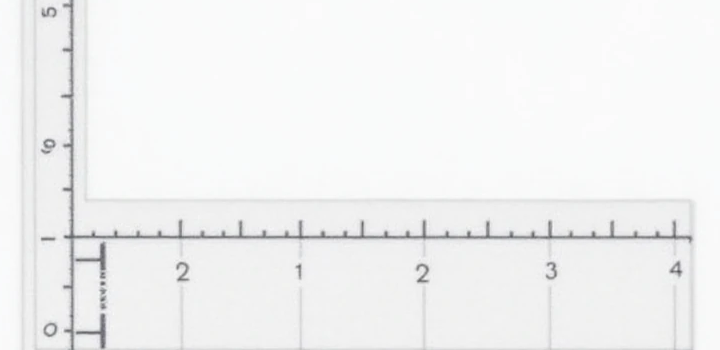Conversion of Physical Quantities: Length Measu

Handy Converter for Units of Length — Why It’s Useful and Interesting?
We often face situations in our daily lives where we need to convert one unit of length into another. This happens quite frequently when reading instructions, studying maps, doing construction or repair works, engaging in sports, and so much more. Our website offers a simple yet accurate tool for fast conversion of any units of length.
Why Do We Need Length Unit Conversion?
Travel & Navigation: To understand distances properly and navigate unfamiliar territories, it’s helpful to know how to quickly convert kilometers to miles and vice versa.
Construction & Renovation: Working with blueprints, schematic drawings, buying materials requires knowing how to translate meters into feet or inches.
Sports & Tourism: It’s important to accurately calculate running routes, cycling paths, mountain climbing trails, and waterways.
Education & Science: Without understanding the basics of length measurement, it would be impossible to study subjects like physics, chemistry, biology, etc.
Where Did Names of Length Units Come From?
Metric System: Originated in France in the late 18th century based on decimal system principles. Its base unit, the meter, was initially chosen according to Earth’s dimensions but later became the international standard.
Foot & Inch: These terms come from medieval England and were historically derived from human body parts. “Foot” literally means “foot,” and originally, an inch equaled the width of an adult man’s thumb.
Kilometer: Created by French scientists, it stands for one thousand meters and has become universally accepted worldwide thanks to its simplicity and practicality.
Are There Any Other Types of Length Measurements?
Besides well-known units like meters, feet, and kilometers, there are less-common historical or exotic ones:
- Yard: About three feet long, formerly used in Britain and America.
- Nautical Mile: Used primarily in navigation and aviation, equivalent to approximately 1,852 meters.
- Verst: An old Russian measure roughly equal to 1.06 km.
- Cubit: Ancient Slavic unit approximating the distance from elbow to fingertip.
Our online calculator will help clarify the variety of available units and simplify working with them. Try using our service right now!
| Unit of Measurement | Symbol | Relation to Meter | Notes |
| Millimeter | mm | 1 mm=0.001 m1mm=0.001m | One-thousandth part of a meter |
| Centimeter | cm | 1 cm=0.01 m1cm=0.01m | One-hundredth part of a meter |
| Decimeter | dm | 1 dm=0.1 m1dm=0.1m | One-tenth part of a meter |
| Meter | m | 1 m=1 m1m=1m | Base unit of length in SI |
| Kilometer | km | 1 km=1 000 m1km=1000m | Equals to one thousand meters |
| English inch | in | 1 in≈0.0254 m1in≈0.0254m | Commonly used in English-speaking countries |
| English foot | ft | 1 ft≈0.3048 m1ft≈0.3048m | Consists of twelve inches (1 ft=12 in1ft=12in) |
| English yard | yd | 1 yd≈0.9144 m1yd≈0.9144m | Three feet long (1 yd=3 ft1yd=3ft) |
| English mile | mi | 1 mi≈1 609.34 m1mi≈1609.34m | Widely used in USA and certain English-speaking regions (“mile”) |
| Nautical mile | nmi | 1 nmi≈1 852 m1nmi≈1852m | Mainly used in maritime and air navigation |
| Light second | ls | 1 ls≈299 792 458 m1ls≈299792458m | Distance light travels in one second |
| Astronomical unit | au | 1 au≈149 597 870 700 m1au≈149597870700m | Average distance from Earth to Sun |
| Parsec | pc | 1 pc≈3.0857×1016 m1pc≈3.0857×1016m | Used in astronomy to measure vast cosmic distances |
| League (nautical league) | lge | 1 lge≈5 556 m1lge≈5556m | Historically used for sea distances |
| Furlong | fur | 1 fur≈201.168 m1fur≈201.168m | Old British measure mainly applied in agriculture |
| Vara (English vara) | vr | 1 vr≈0.9144 m1vr≈0.9144m | Another historic term for yard (1 yrd=1 vr1yrd=1vr) |
| Versta (Russian versta) | верст | 1 верст≈1 066.8 m1верст≈1066.8m | Former Russian measure before metric system introduction |
| Arshin | arshins | 1 арш≈73(≈0.711) m1арш≈37(≈0.711)m | Historical Russian measure used until early 20th century |
| Line | lines | 1 лин≈112 дюйм≈0.002117 m1лин≈121дюйм≈0.002117m | Obsolete small unit mostly found in older documents |
| Finger | fingers | 1 палец≈116 дюйм≈0.001592 m1палец≈161дюйм≈0.001592m | Very small obsolete unit almost unused today |
Most Frequently Asked Questions about Length Measurements
How many centimeters are in 2 meters?
2 meters = 200 centimeters.
How many millimeters are in 3.5 kilometers?
3.5 kilometers = 3,500,000 millimeters.
How many meters are in 5 yards?
5 yards ≈ 4.572 meters.
How many feet are in 10 meters?
10 meters ≈ 32.808 feet.
How many inches are in 1.5 meters?
1.5 meters ≈ 59.055 inches.
How many kilometers are in 10,000 meters?
10,000 meters = 10 kilometers.
How many miles are in 5 kilometers?
5 kilometers ≈ 3.107 miles.
How many microns are in 1 millimeter?
1 millimeter = 1,000 microns.
How many nanometers are in 1 micron?
1 micron = 1,000 nanometers.
How many hectometers are in 1 kilometer?
1 kilometer = 10 hectometers.
How many decimeters are in 5 meters?
5 meters = 50 decimeters.
How many dekameters are in 200 meters?
200 meters = 20 dekameters.
How many yards are in 20 meters?
20 meters ≈ 21.872 yards.
How many fathoms are in 100 feet?
100 feet ≈ 16.667 fathoms.
How many nautical miles are in 10 kilometers?
10 kilometers ≈ 5.3996 nautical miles.
How many leagues are in 100 kilometers?
100 kilometers ≈ 20.712 leagues.
How many rods are in 100 yards?
100 yards ≈ 55 rods.
How many chains are in 1000 feet?
1000 feet ≈ 60.606 chains.
How many links are in 1 chain?
1 chain = 100 links.
How many hands are in 1 meter?
1 meter ≈ 9.843 hands.